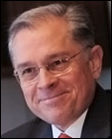The War on Wearables
HIStalk looks at the bad rap wearables have been getting lately. From class action lawsuits against Fitbit to digital health snake oil comments, wearables have major ground to cover when it comes to winning over providers as medically reputable devices.
By @JennHIStalk

Industry headlines would have you believe that it’s not the most opportune time to be in wearables. The consumer-friendly devices, most of them of the fitness-tracking variety, face abandonment rates of between 33 and 50 percent after the first six months of use, not to mention increasing scrutiny as to the accuracy of their measurements.
And then there’s the comment heard ‘round the health IT world: “From ineffective electronic health records, to an explosion of direct-to-consumer digital health products, to apps of mixed quality. This is the digital snake oil of the 21st century.”

The comments of AMA CEO James Madara, MD during the association’s annual meeting last month was provocative to many. Although it did have a certain clickbait ring to it, his stance was born out of an underlying concern by many in the medical field that digital health tools — of which wearables take up an increasing percentage — have yet to be fully accepted by physicians. Whether it’s accuracy, usefulness, easy integration with EHRs, or reimbursement for time spent sifting through all that data, wearables haven’t achieved the panacea status many entrepreneurs would have providers and consumers believe they’re capable of.
The Physician’s Perspective
And yet there seems to be no going back. Companies continue to work wearables into their product roadmaps, even in the face of questionable data accuracy. Elmurst, IL-based Power2Practice, for example, announced Fitbit integration with its EHR for integrative medicine last month. UK-based personal health record company Medelinked has announced a similar arrangement with Jawbone.
Clinical researchers don’t seem deterred, either. The Dana-Farber Cancer Institute’s new breast cancer weight loss study has equipped all of its participants with Fitbits to track activity and weight. The examples of academic and corporate enthusiasm for wearables could — and likely will — go on, suggesting that, like the ancient medicinal properties of snake oil, there is a grain of truth to their purported value.

Danny Sands, MD, a practicing physician at Beth Israel Deaconess Medical Center (MA), co-founder of the Society for Participatory Medicine, and chief medical officer at several healthcare companies admits to wearing a Fitbit because he likes receiving reminders that he needs to pick up the pace on a daily basis.
“I think that’s a positive step in the right direction, if you’ll excuse the play on words,” he jokes. “We have to remember that these are consumer devices. They’re not accurate clinical devices. For some people, having the Fitbit on is a motivator. I have seen firsthand how my encouragement to get a Fitbit helped one of my patients get moving and make profound changes in his life. Unfortunately, the vast majority of people who use these tracking devices don’t need to. They’re being used by the young, healthy, and wealthy, not by my patient with three chronic conditions who really should be wearing one.”
“As a primary care doctor,” Sands explains, “one of the things that is so hard and so frustrating is this issue of behavior change – how to motivate patients. If this is one more tool we can use to help motivate our patients, then I figure there’s something to it.” He adds, however, that not all physicians are comfortable recommending wearables and apps, either because they’re not familiar with what’s on the market or have no interest in diving into the back-end issues of receiving that deluge of data.
“You have to ask yourself, as a physician, is this data useful to me,” Sands says. “There it gets a little more complicated, because, first of all, there’s the issue of accuracy. Second, there’s the issue of integration with my workflow/EHR. Third, and perhaps most importantly, it’s about the volume of data that these things generate. This is only going to be useful to me in my practice if it’s information I want to see on a patient that I want to keep track of. Perhaps I’m in some sort of value-based payment contract where I have an incentive to try and keep my patients healthy. I need to figure out how to separate the signal from the noise. I need a system that’s going to show me just the data that’s important to me.”
Sands obviously isn’t convinced by the snake oil rhetoric. “Time and time again we’ve seen that a computer program in the absence of human beings providing something as well is not going to make a big difference in people’s lives. You need systems in place. You need some interface with the healthcare system. If you want to show measurable benefits, then you really have to have human beings there – some touchpoint with the healthcare system.”
The Quality vs. Quantity Conundrum
ACT | The App Association, the Washington, DC-based nonprofit that represents software companies in the mobile app community, has been keeping a close eye on the evolution of wearables in the healthcare space. “Connected devices that we think of as wearables are undergoing a significant transition,” says Executive Director Morgan Reed. “As sensors and technology improve, these devices are rapidly blurring the line separating highly accurate medical devices and something you might pick up at an airport kiosk.”

“The struggle,” he adds, echoing Sands’ comments, “will be taking all of that accurate information and presenting it to a care provider in a meaningful way. This is a place where the balance between quality versus quantity comes into play on the physician side. EHRs – loved or loathed – aren’t so much barriers, but instead have created a new paradigm in which medical apps and connected device makers must create technology that integrates seamlessly with those systems. An ideal interoperable system gives care providers access to a lot of data, but instead of just dumping it into one place, the system highlights the data that the physician needs the most, and makes it available in a usable format. Open APIs are a big part of the solution. The tech industry, regulators, and physicians need to work together to determine how best to create and implement these APIs and related standards.”
Workflow Integration will be Key
Companies like Validic are helping physicians navigate the still-murky waters of wearables integration. The Durham, NC-based company recently partnered with SAP to enable its enterprise healthcare clients to easily access patient data from wearables, clinical devices, and consumer health apps using Validic’s digital health connectivity tools. Co-founder and CTO Drew Schiller believes partnerships like these will help wearables move past the early days phase they seem to be stuck in.

“Consumer wearables as a market is still maturing, with only one IPO and a couple of exits,” Schiller explains. “We are still in the early phases of using these devices in healthcare. Given this, it’s unsurprising that there have been challenges getting adoption from providers. The ‘time to drawer’ is a concern, indicating that these devices may not have yet reached full utility.”
“The biggest barriers today have to do with presenting meaningful information in existing workflows,” he adds. “One barrier is that we are still working to understand the applications and necessary reporting mechanisms for healthcare. There are dozens of ongoing pilots, projects, and grant-funded studies looking to address these needs, and organizations like Node Health are working to bring these disparate efforts together in one place and disseminate learnings.”
“I wouldn’t say that categorically certain wearables are more conducive to integration,” Schiller points out. “However, having a single point of entry for all wearable data certainly makes things easier. Additionally, if an endpoint from the wearable already has a classification and a place in workflow, that makes the logistics of implementation much easier.”
The Biggest Impact
Despite their current shortcomings, wearables seem poised for improvement in terms of provider acceptance, ease of use and integration, overall sophistication, and, most importantly, impact on patient care.
“In the immediate term, wearables enable people to take a more active role in their health,” says Reed. “This represents a shift toward prevention instead of treatment once someone is sick. In the longer term, insights powered by mission-specific wearables and apps will be huge for physicians and patients. Patients can use connected devices to help manage chronic conditions like diabetes or complete post-operative physical therapy, all while physicians monitor progress and identify potential risks.”
Moore adds that one of the most critical issues facing the healthcare system is that of the rapidly aging US population. “By 2050, there will be 83.7 million Americans over the age of 65 – that’s more than double the number just four years ago,” he points out. “Eighty percent of them will have at least one chronic condition, and a large portion will live in rural areas far from family members that could offer support. Wearables and apps are key to empowering this population, helping them to live healthier – and independently – for much longer.”
“Looking forward,” he adds, “advanced personal emergency response systems will be wearables packed with sensors and enabled by mobile apps that can track blood sugar, blood pressure, heart rate, biomarkers for medication adherence, and geofencing for Alzheimer’s patients. The sensors in these devices will then connect to a loved one’s phone, a physician’s tablet, and a medical record system. This increasingly connected approach to healthcare will lower costs and empower aging populations to live at home longer.”
Schiller concurs that wearables will be key to helping care for an increasingly elderly population. He also points out that the devices will help make up for the physician shortage we’ve all heard so much about. “We face a generation of physicians preparing for retirement and a dearth of PCP replacements. We simply won’t have the skilled workforce to maintain business-as-usual practices in healthcare. We must better leverage technology to scale reduced healthcare resources with an eye toward preventing sickness before it becomes chronic. Wearables will play a central role in this revolution.”
Present Benefits are Possible
While the revolution is in the works, wearables, for all their documented shortcomings, are capable of offering near-term benefits to physicians and patients. “Those benefits will depend on the supporting infrastructure and tools the health system and/or EHR vendor has put in place,” Schiller says. “For example, Cerner and Meditech have built smart alerting and dashboarding into their patient portals leveraging a growing list of patient-generated data from remote monitoring devices, including wearables. Health systems such as Sutter Health have realized tremendous success with wearables in comprehensive remote patient monitoring programs for chronic diseases like hypertension. Programs like these will help a physician better treat patients by knowing precisely how well or how poorly a patient is progressing in their care.“
“Long term,” he adds, “physicians will benefit from a shift toward preventative and monitoring measures. This will enable PCPs to know how their patients are doing without physically seeing them, allowing them to spend more time with patients who need care the most.”
Time – and the Market – will Tell
“We are currently witnessing Moore’s Law as applied to wearable devices,” Schiller concludes. “Wearables on the market 18 months ago are significantly inferior to the capabilities of those on the market today, and we expect to see another jump in functionality and sophistication within the next six to 12 months. I could make some specific predictions, but it makes sense to instead state more generally that the consumer technology industry will rise above these challenges to make useful, compelling, and practical devices.”










































































"A valid concern..." Oh please. Everyone picks the software they like and the origin of that software is an afterthought.…